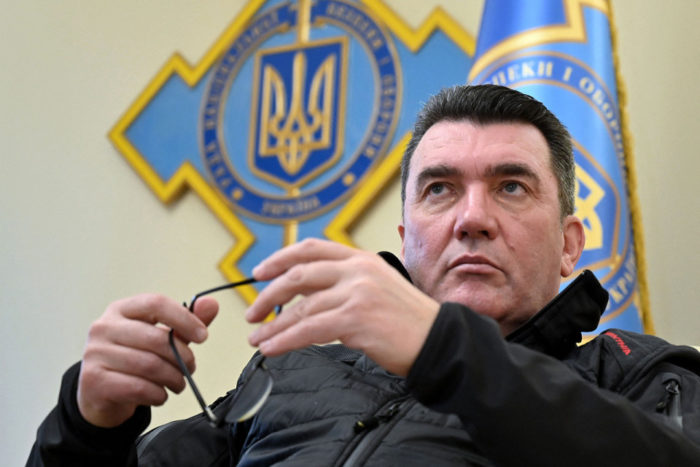In the wake of the Ukrainian Main Intelligence Directorate’s official announcement of a planned counteroffensive in spring 2023, a notable increase in explosive incidents on Russian territory has been reported. The Ukrainian outlet LIGA.net has created an interactive map of the incidents. Presumably caused by drone attacks or saboteurs, they have escalated in frequency, with 14 such incidents recorded within the first nine days of May; 14 were also reported in the entire month of April.
Explosions skyrocket in Russia ahead of Ukraine’s planned counteroffensive
14 explosions, presumably caused by drone attacks or saboteurs, were reported in the first nine days of May alone, not counting the persistent stream of blasts in occupied Crimeahttps://t.co/hlZUK66dVd pic.twitter.com/Y0aDsgDa8l
— Euromaidan Press (@EuromaidanPress) May 10, 2023
The data, collected from 26 February until 7 May, includes successful drone attacks, explosions, and acts of sabotage. However, it does not cover incidents reported by Russian propaganda outlets or those likely resulting from environmental issues or human factors. “Cases of dozens of shot down drones and prevented numerous acts of sabotage reported almost daily by Russian propagandist media did not make it to the map,” states LIGA.net.
Geographically, the Belgorod Oblast, with 11 recorded incidents, stands out as the most “explosive” region in Russia, followed by Bryansk with nine incidents, and Krasnodar Krai with five. Most targets within Russia are infrastructure objects, including power facilities and railway infrastructure. Specifically, Bryansk Oblast appears to be especially prone to such incidents, with freight trains derailing due to explosions two days in a row.
Following a relatively peaceful March with only five recorded incidents, there has been a surge in these incidents since mid-April, primarily targeting power facilities.
In contrast, despite the escalation in Russia, the amount of explosions in the occupied Crimea remain consistently high, LIGA.net says.
https://twitter.com/EuromaidanPress/status/1653447005132161045?
Recent explosions in Russia and occupied Crimea
Recent weeks have seen a series of explosions in multiple locations including occupied Crimea, Krasnodar Krai, Kursk Oblast, Bryansk Oblast, and Nizhniy Novgorod Oblast.
In occupied Crimea and Krasnodar Krai, located across the Azov Sea from the occupied peninsula, there have been a number of reported incidents involving Russian fuel facilities.
A significant fire broke out at a fuel facility in Krasnodar Krai just four days ago. An incident in Crimea, where an air defense system was reportedly activated in response to the explosions, occurred the next day.
Russian oil refinery located 200 km from Crimea reportedly attacked a second time in two days
Russian Telegram channel Baza reported another explosion on the territory of the Ilskiy oil refinery, allegedly caused by a drone, which Russian officials deny. https://t.co/yHM8ck5OnL pic.twitter.com/8KXE1WI5Rj
— Euromaidan Press (@EuromaidanPress) May 5, 2023
Several incidents involving explosions in occupied Crimea have been reported in recent weeks. Explosions targeting Dhzankoi were reported on 6 May, and the same location was targeted by Ukrainian drones on 20 March in an attack that Ukrainian officials said hit a railway hub as part of preparations for Ukraine’s impending counteroffensive.
https://twitter.com/EuromaidanPress/status/1654829392177123336?
On 8 April 2023, the Russian occupation authorities in Feodosia reported shooting down a missile allegedly from mainland Ukraine.
The explosions occur amid Ukraine’s preparations for a counteroffensive, which targeted such locations in occupied Crimea as a fuel depot in occupied Sevastopol, which caught fire after an alleged drone attack on 29 April. The same day, explosions were reported in Russia’s Kursk Oblast, where Russian soldiers claimed to have witnessed the blasts, believing a missile or drone attack caused them.
Meanwhile, in Bryansk Oblast, a railway explosion derailed a freight train for the second time in two days, as reported by Russian news media RIA Novosti.
Fuel and timber train derails after explosion on railway in Bryansk Oblast, Russia
Russian Telegram channel Baza reported train was carrying 60 wagons w/ fuel & timber; 7-8 wagons overturned & caught fire. Extent of damage unknown https://t.co/AjAkt6Uh10pic.twitter.com/IpNFvQ2kY9
— Euromaidan Press (@EuromaidanPress) May 1, 2023







